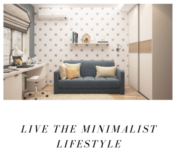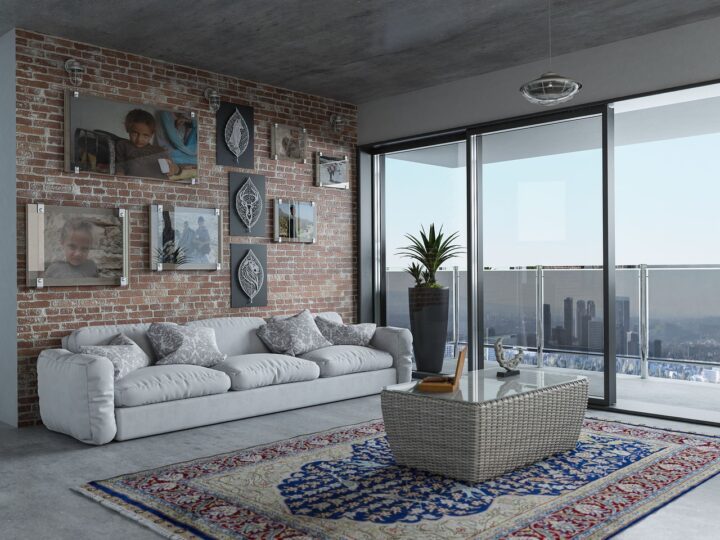Table of Contents
Modern Minimalist: Embracing Simplicity in Design and Lifestyle
Modern minimalism is more than just a design trend; it is a lifestyle that embraces the philosophy of “less is more.” This approach encourages individuals to simplify their spaces and lives by focusing on essentials, fostering a sense of tranquility and calmness. By reducing clutter and choosing meaningful décor, one can create an environment that feels open, airy, and inviting. Following these principles you will be on your way to becoming a modern minimalist.

Incorporating modern minimalist principles can significantly enhance the way a person interacts with their space. It emphasizes functionality without sacrificing style, making it easier for anyone to enjoy their home. By paying attention to color, light, and furniture choices, individuals can achieve a beautifully balanced aesthetic that supports a serene living experience.
For those unsure about taking the plunge into minimalism, know that small changes can lead to profound improvements in one’s daily life. Adopting a modern minimalist approach can bring clarity and happiness, ultimately leading to a more fulfilling way of living.
Key Takeaways
- Modern minimalism promotes a streamlined and calming environment.
- Functionality and simplicity are key in choosing furniture and décor.
- Embracing minimalism can lead to a more harmonious way of life.
Understanding Modern Minimalism
Modern minimalism centers on simplicity and functionality in design. It aims to create aesthetically pleasing spaces that prioritize essential elements. This approach not only enhances beauty but also promotes a sense of calm in environments.
Historical Context of Minimalism
The roots of modern minimalism trace back to the early 20th century. The Bauhaus movement significantly influenced minimalist design. This German school emphasized form, function, and simplicity in its teachings.
In the mid-1900s, artists and designers further developed minimalist ideas. They focused on stripping away the unnecessary, leading to a design style that became known for its clean lines and open spaces.
Minimalism has evolved through various movements, including art and architecture. Each iteration emphasized reducing complexity while highlighting beauty and purpose.
Principles of Minimalist Design
Minimalist design is built on key principles that make spaces more enjoyable. Here are a few core ideas:
- Simplicity: Keeping only what is necessary creates clarity in design.
- Functionality: Every item should serve a purpose, avoiding clutter.
- Aesthetics: Designs should be visually pleasing, using space creatively without overcrowding.
Colors in modern minimalist design are often neutral, promoting a peaceful atmosphere. This style encourages an uncluttered environment that helps create balance and tranquility in daily life. The use of textures and natural materials can enhance the overall appeal while maintaining the design’s minimalist ethos.
Color and Light in Minimalist Interiors
In minimalist interiors, color and light play crucial roles in creating a serene and balanced atmosphere. Neutral color palettes combined with natural light can enhance the simplicity and elegance of a space. Below are key aspects of achieving the right balance.
The Role of Natural Light
Natural light is important in minimalist design. It brings warmth and openness, making rooms feel larger and more inviting. Designers often position windows and openings to maximize light exposure throughout the day.
Large windows, skylights, and light-colored walls can reflect and amplify natural light. This enhances the beauty of a neutral color palette. Spaces filled with light create a calm ambiance, while also highlighting textures and materials used in the decor.
Choosing a Color Scheme
Selecting the right color scheme is essential for a minimalist interior. A limited color palette featuring whites, beiges, and grays creates a foundation for a clean look.
Using soft earth tones can add depth without overwhelming the senses. These colors work well together, providing a seamless flow between rooms. A carefully chosen palette can set the tone, making the space feel cohesive and balanced.
Incorporating Texture and Contrast
Texture adds interest to minimalist interiors while keeping the overall look simple. Mixing materials like wood, stone, and textiles can break up the monotony of plain walls.
For example, a soft linen sofa can complement sleek surfaces like a wooden table. It’s also effective to pair different textures in similar shades to maintain harmony. Using contrasting elements, like matte and glossy finishes, can also create visual interest without cluttering the space.
Furniture and Functionality
In modern minimalist design, furniture plays a crucial role in creating a space that is both functional and aesthetically pleasing. Choosing the right pieces can enhance negative space and contribute to the overall feel of a room.
Selecting Multipurpose Furniture
When it comes to modern minimalist living, selecting multipurpose furniture is essential. Pieces that serve more than one function help maximize space and reduce clutter.
For example, a bed with built-in storage or a sofa that converts into a bed can offer great utility.
Consider these options:
- Sofa beds: Perfect for small living rooms.
- Drop-leaf tables: Ideal for dining or working.
- Ottomans with storage: Great for extra seating and stowing items.
These choices support clean lines and keep the room open, enhancing an airy feel.
Creating a Focal Point
In minimalist design, creating a focal point can draw the eye and add depth to a space. An anchor piece, such as a striking piece of furniture or art, can set the tone for the entire room.
In a minimalist living room, a bold coffee table or an elegant accent chair may serve this purpose.
Tips for choosing a focal point:
- Select items with unique shapes or colors.
- Ensure the piece complements the overall design without overwhelming it.
- Use negative space around the focal point to enhance its impact.
By thoughtfully arranging furniture, one can create a welcoming environment that feels both spacious and inviting.
Minimalist Decor and Accessories
Creating a minimalist space involves more than just choosing simple furniture. It is about carefully selecting decor and accessories that enhance the overall aesthetic while keeping things uncluttered. This section focuses on the importance of decluttering and how green plants can add life to a modern minimalist style.
Decluttering for a Clean Look
Decluttering is essential in achieving a clutter-free environment. It involves removing unnecessary items that contribute to visual clutter. This approach allows for a serene and spacious atmosphere.
To start decluttering, one can follow these steps:
- Identify items that are no longer needed.
- Sort belongings into categories: keep, donate, or discard.
- Organize remaining items using simple storage solutions.
Using neutral walls also enhances the minimalist look. Colors like white, beige, or gray help create an open feel and make decorative elements stand out. By limiting the number of items displayed, each piece can become a focal point, adding to the room’s charm.
Adding Green Plants and Decorative Elements
Incorporating green plants into a minimalist design adds vibrancy and warmth. They are a great way to introduce color without overwhelming the space. Plants such as succulents or snake plants require minimal care and fit perfectly in a modern minimalist style.
When selecting decorative elements, keep it simple. Choose pieces that reflect personal taste while maintaining a cohesive look. A few carefully selected items, like a unique vase or artwork, can serve as pops of color against neutral backgrounds.
The key is to balance beauty with simplicity. Combining plants and simple designs creates a inviting home that feels both stylish and comfortable.
Achieving Tranquility and Calmness
Creating a peaceful and calming space is essential for promoting tranquility in a home. Key elements include maintaining open spaces and a minimalist aesthetic, along with thoughtfully chosen lighting. These aspects help in fostering a serene environment.
Promoting a Calming Atmosphere
To promote a calming atmosphere, focus on streamlined design. This means selecting furniture and decor that has clean lines and simple shapes. Clutter can lead to stress, so it is important to minimize decorations and keep surfaces clear.
Open spaces are vital for creating a sense of freedom and relaxation. Avoid heavy furniture that can make a room feel cramped. Instead, opt for lighter pieces that allow for easy movement and flow.
Choosing a neutral color palette can also enhance tranquility. Soft whites, grays, and earth tones can evoke a sense of calm and balance. In addition, incorporating natural elements like plants can bring a refreshing feel to the space.
Enhancing the Space with Lighting
Lighting plays a critical role in establishing a calming environment. Pendant lights and soft lamps can provide gentle illumination, creating an airy feel. Aim to use warm light bulbs for a cozy and inviting atmosphere.
Natural light is another essential element. Large windows and open layouts allow sunlight to flood the room. This connection to nature helps to improve mood and create a welcoming ambiance.
Consider using dimmers on overhead lights. This allows for adjusting the brightness based on the time of day and activity. Layering different light sources, such as table lamps and candles, can further enhance the calming space.
Frequently Asked Questions
Modern minimalism focuses on simplicity and functionality in design, fashion, and lifestyle. It emphasizes clean lines, a neutral color palette, and the importance of meaningful choices. Here are some common questions about incorporating modern minimalist principles into various aspects of life.
What are the key elements of modern minimalist interior design?
Key elements include clean lines and uncluttered spaces. Neutral color palettes, often with whites, grays, and soft earth tones, create a calming atmosphere. Functional furniture and decor that serve a purpose without unnecessary embellishments are also essential in modern minimalist design.
How do I create a modern minimalist living room on a budget?
Start by decluttering and removing items that don’t serve a purpose. Invest in a few key pieces, such as a simple sofa and minimalist coffee table. Use affordable decor like plants or simple artwork to enhance the space without overwhelming it.
What characterizes modern minimalist fashion and how can I adopt it?
Modern minimalist fashion focuses on clean silhouettes and a limited color palette. Essential pieces include well-fitted basics and versatile accessories. To adopt this style, choose high-quality items that mix and match easily, reducing the need for a large wardrobe.
Can you provide tips for choosing artwork for a modern minimalist space?
Select artwork that reflects simplicity and complements the color scheme. Large, bold pieces can make a statement without cluttering the space. Aim for a few carefully chosen pieces rather than a gallery wall to maintain a clean look.
How do I design a modern minimalist logo that stands out?
Keep the design simple with clear typography and a limited color palette. Focus on the core message and eliminate any unnecessary elements. Using negative space creatively can help make the logo memorable while maintaining a minimalist aesthetic.
In what ways can adopting a modern minimalist lifestyle lead to greater happiness?
A modern minimalist lifestyle promotes clarity and reduces stress by eliminating distractions and excess. Focusing on experiences rather than possessions can lead to more meaningful relationships. This approach allows individuals to appreciate what truly matters in life.

